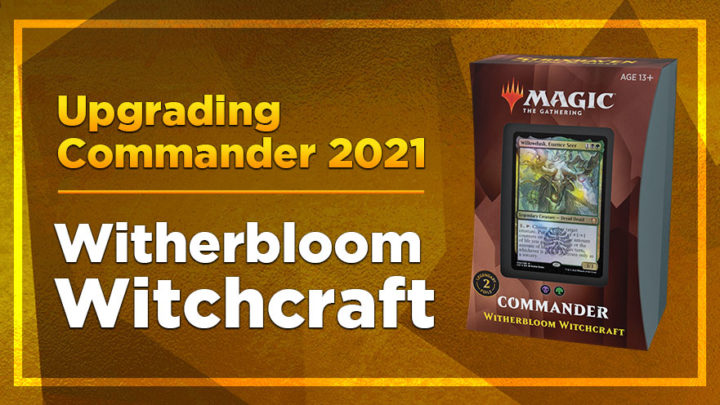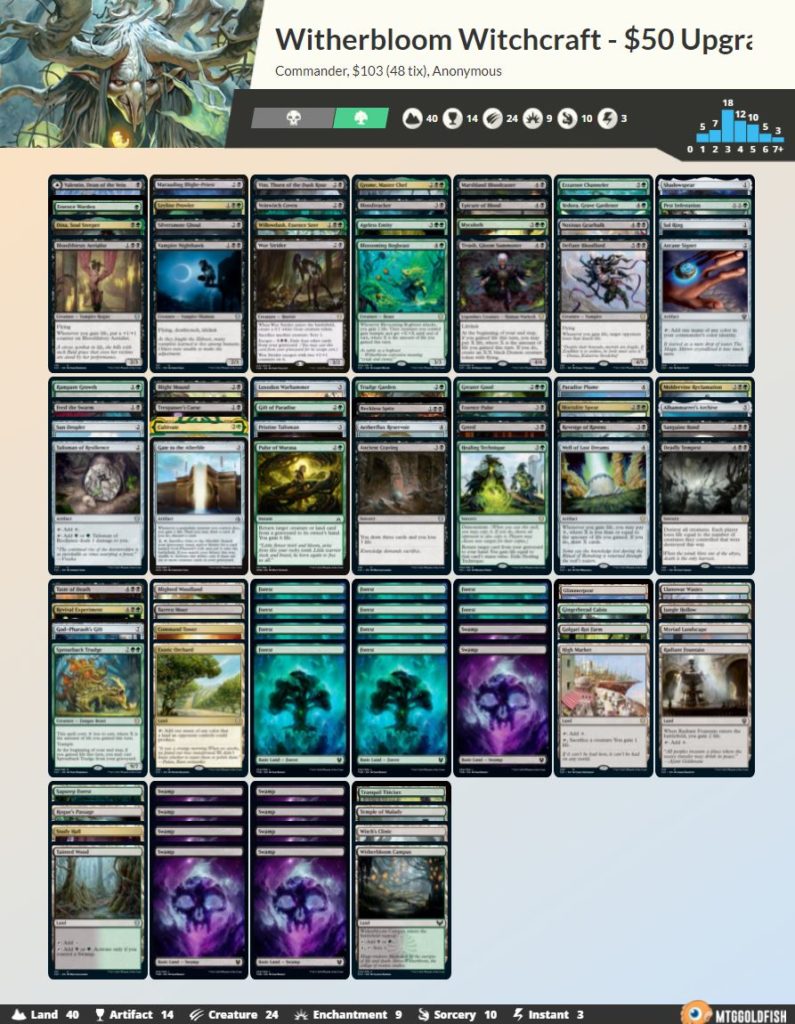Witherbloom Witchcraft and the other Strixhaven precon decks feel like a new evolution in Commander products, full of top-class new cards and many viable paths to upgrade them. Check out our reviews for those other decks, too, if you want – but if you already know your home is with the B/G Bog Goths, read on!
THE COMMANDER
Willowdusk, Essence Seer is an immensely powerful leader for the Witherbloom deck, but she also represents a departure from past Commander precon designs. Willowdusk doesn’t provide a static benefit to help justify niche cards around her theme or tribe, nor does she set the deck up to easily churn resources towards a critical mass.
Her pump effect does have great synergy with nearly every other spell in the deck, but not in a way designed to feed back into those cards. There’s no real “counters” theme in the base build of the deck, and you’d have to do a lot of work to turn the Dryad Druid into some kind of combo engine. What this effect does offer is a scaling, significant payoff for a flat, low cost; it offers a clear and resilient path to victory (through giant creature beats) with only basic requirements for triggering it or utilizing it. All Willowdusk asks is that your life total changes during your turn, and that you have some other creature around to benefit from the fruits of her labor.
This is the most fun and enduring kind of Commander design, in my experience: powerful and unique enough to unlock signature plays, but not so specific or dominant that it overshadows the choices you make in the 99. Which is important, because once you decide to upgrade this precon, you’ll find there are some momentous choices to make!
WHERE TO BRANCH OFF?
If you’re just looking to buy Witherbloom Witchcraft to break it up and supplement your existing decks, this is an excellent precon for that purpose. You can find my detailed analysis of the new lifegain-focused cards here; I’d go so far as to say this deck is essential for anyone looking to build around that theme in Witherbloom colors. From here, though, I’ll presume you’re looking to use this precon as the foundation of a deck rather than spare parts, making a handful of high-impact changes to put your own personal spin on it.
When you start from a precon like this, it’s important to remember that they’re not designed to be simply 75% of a finished deck, waiting for you to slot in a few missing power cards. What you get out of the box is more like a sample platter, with fragments of three or four very different green-black Commander decks jumbled together.
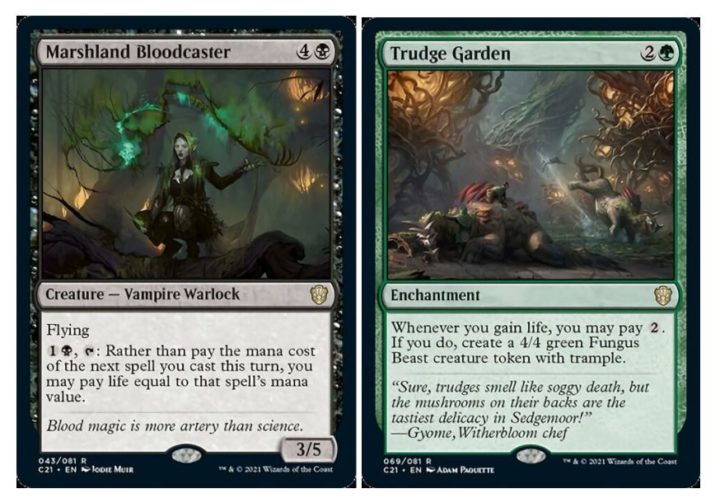
It’s certainly fun and playable as-is, with the lifegain theme mostly tying things together. But, over time, you should naturally swap out the cards you’re less excited about for ones that emphasize your favorite subtheme. The deck will run much better once it’s focused this way, and you’ll be able to show off some very different lines to any other Willowdusk player at your table!
DIFFERENT WALKS OF LIFE
We can break down the deck into specific synergies with a simple question: Does a card care about how much life we gain, or how often we’re gaining it?
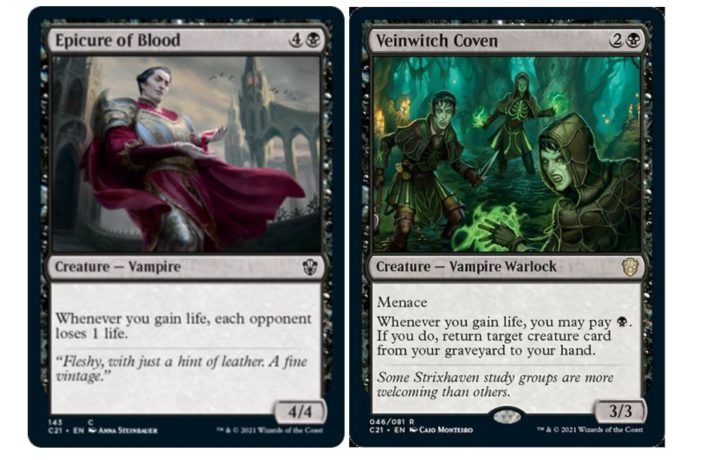
The latter sort of card (those with “Whenever you gain life” triggers) work best with cards that can repeatedly gain life for minimal resource investment. There are already some good examples included in the deck: cheap but hard-to-block lifelinkers; incidental lifegain on nuts-and-bolts cards like Pristine Talisman or High Market; reliable, zero-mana triggered abilities like Paradise Plume and Moldervine Reclamation.
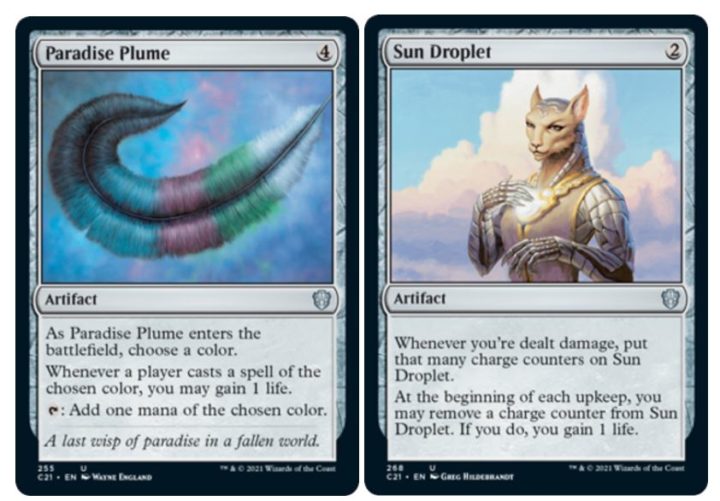
As long as we keep the activation costs on these effects low, we’re able to stack them on top of each other — each lifegain enabler can trigger three or four payoff cards at once for additional value. There’s almost no ceiling on how many of these cards you want in this “engine deck” build. The goal is to just keep sticking permanents until you reach critical mass — either finding enough value to go infinite, or just using Willowdusk to double the size of Vampire Nighthawk every turn after combat while you sit safely behind a wall of life and tokens.
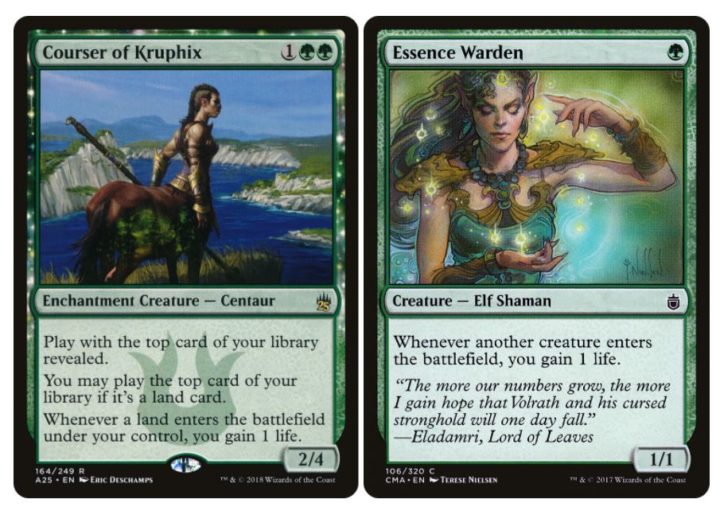
These sorts of decks are quite common in Commander, so a lot of the lifegain enablers will be familiar to veterans. Courser of Kruphix and a handful of other cards trigger when lands enter the battlefield — very handy alongside green land-ramp packages. Essence Warden is a narrow but hyper-efficient option, triggering our life payoffs whenever anybody makes a creature; we also have alternatives like Ayara or Bontu’s Monument, which create fewer triggers but have other utility. Revenge of Ravens can make attacking an absolute nightmare for opponents, depending on what payoffs we have on board, while Aetherflux Reservoir can dominate games if we keep finding spells to cast.
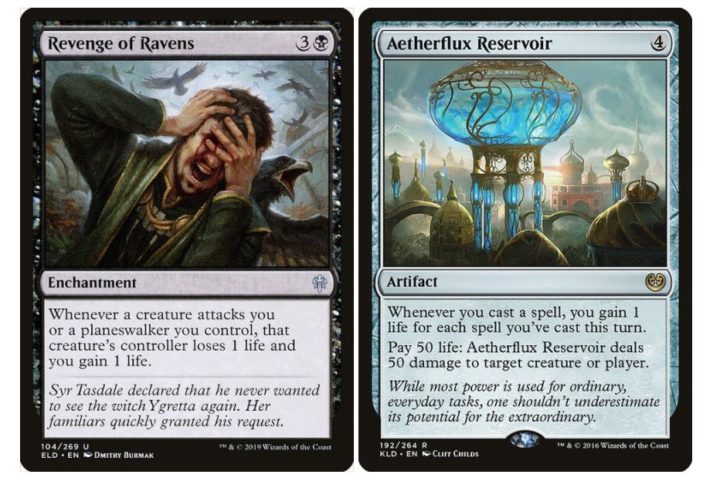
Lifegain is such an evergreen part of Magic that you can find efficient ways to generate triggers from almost any action. Attacking, milling yourself, playing artifacts, exiling cards from graveyards, playing cards of a specific color or creature type — any of these can become an effective subtheme for your Willowdusk engine. And by focusing on one or two of these themes, you’ll soon figure out which supporting cards you need to add in your next iteration.
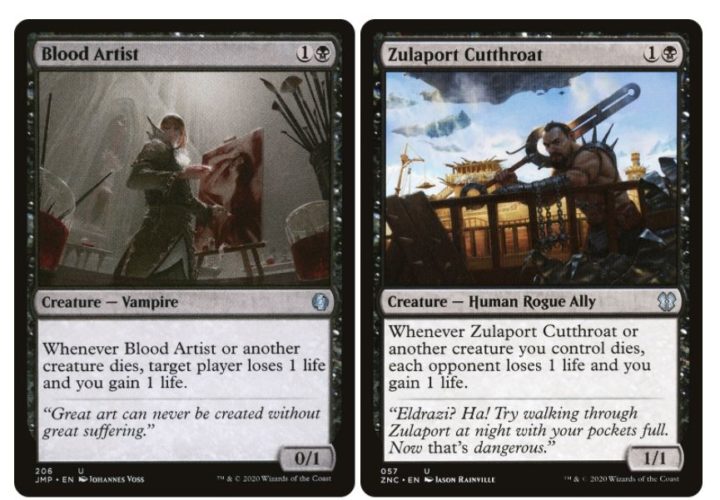
A classic example is Blood Artist (and the extended family of related effects, such as Zulaport Cutthroat). They’re cheap to play and easy to trigger whenever you want — so long as you have a way to sacrifice creatures and a way to make lots more of those creatures efficiently. Surprisingly, the base build of Willowdusk has neither. Adding Blood Artist(s) as our lifegain engine will inevitably lead to retrofitting our precon with token and sacrifice synergies, too.
GAIN BIG OR GO HOME
So engines can sort themselves out — but what if you want to go in a different direction? Several of the lifegain payoffs in Witherbloom Witchcraft, including Willowdusk herself, specifically scale up their effect based on how much life you can gain in one instance or in a single turn. These cards can trigger off single-point lifegain triggers, but in most cases, they work better with one-shot lifegain spells like Pulse of Murasa or Noxious Gearhulk — even if we aren’t guaranteed to have one ready every turn.
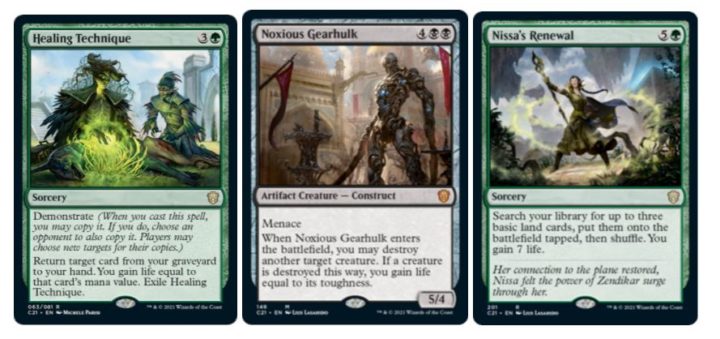
You can see how focusing on extra utility spells instead of niche engine pieces will result in a much more midrange-y style of Willowdusk list, even before we start swapping out cards. It’s definitely still a lifegain deck, but instead of constantly building up your Rube Goldberg value engine, you’re grabbing that value in opportunistic bursts, thanks to a few key payoffs.
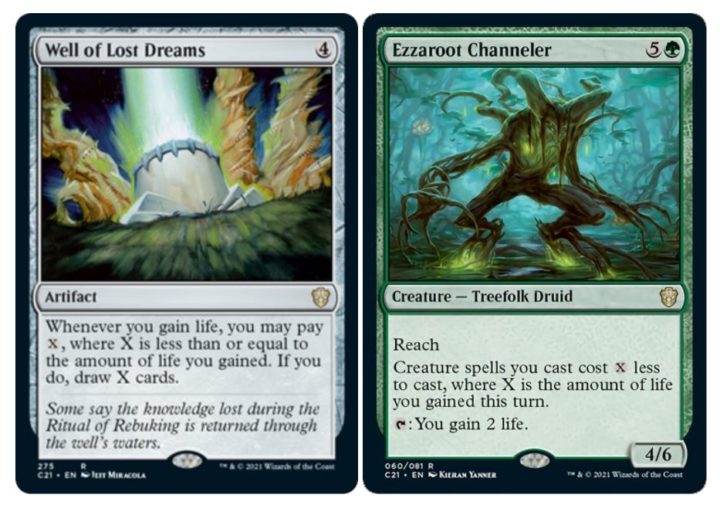
Rather than selecting payoffs based on how mana-efficient they are to activate, this build is looking for card efficiency: how much impact can a single synergy piece have on its own? Well of Lost Dreams is a little clunky to set up and keep paying for in the small-life build compared to something like Smothering Abomination — but we don’t need to warp our whole deck around meeting its conditions. It’s also far easier to make up for the tempo loss of a single four-mana artifact or five-mana enchantment in this deck, where the rest of our spells are efficient interaction and threats.
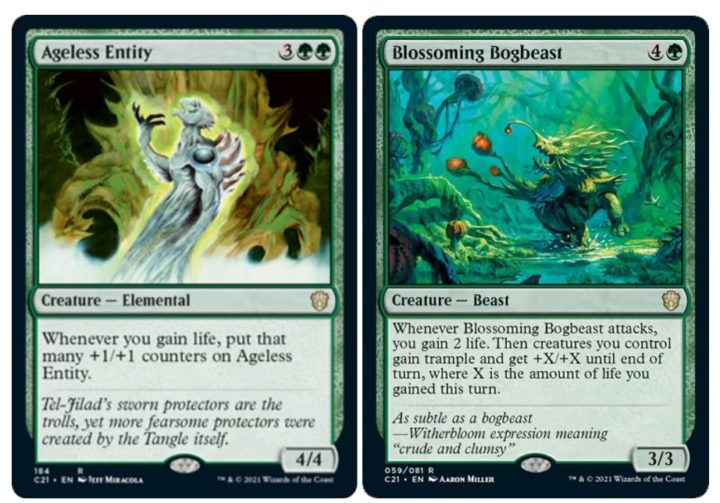
Big-life Willowdusk also wants payoffs that win the game, or that contribute significantly to that end. Making tokens on lifegain is great for sacrifice decks, which can turn any creature back into cards and mana — but here, we aren’t bothering unless the tokens are huge flyers to crush the game for us. Drawing cards and making oodles of mana is just too good to skip over, but ideally, we want something like Aetherflux Reservoir or Blossoming Bogbeast to just drop the life-hammer on opponents.
REAL LIFE CONSEQUENCES
I do firmly believe that you need to pick either the small-life or big-life route when you start working on this precon, and your decision will influence card choices even beyond which lifegain cards you go for!
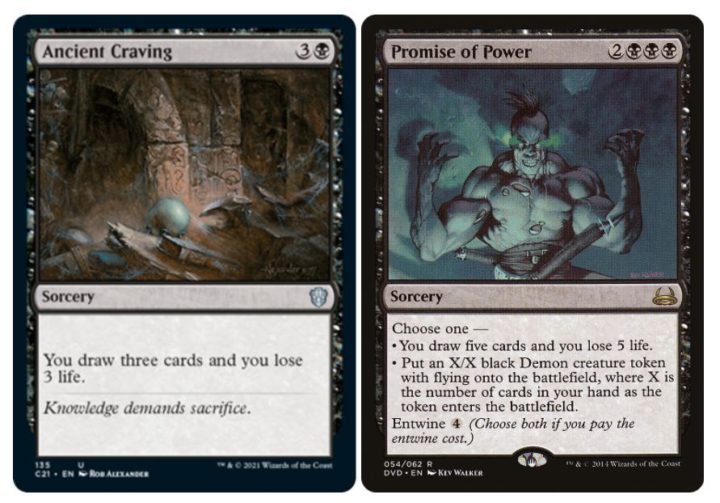
Your method of “drawing” new cards is one such choice. The small-life build naturally leads to a lower average mana value, so you’ll be drawing and playing cards in high volumes. Meanwhile, the big-life build is more of a high-curve deck that requires the most impactful effects you can get your hands on. The small-life deck wants you to play traditional draw spells like Greed and Ancient Craving, because it can afford to play all those new cards. But the big-life deck benefits significantly more from milling cards into the graveyard, which becomes a toolbox for recurring and reanimating bombs as you need them.
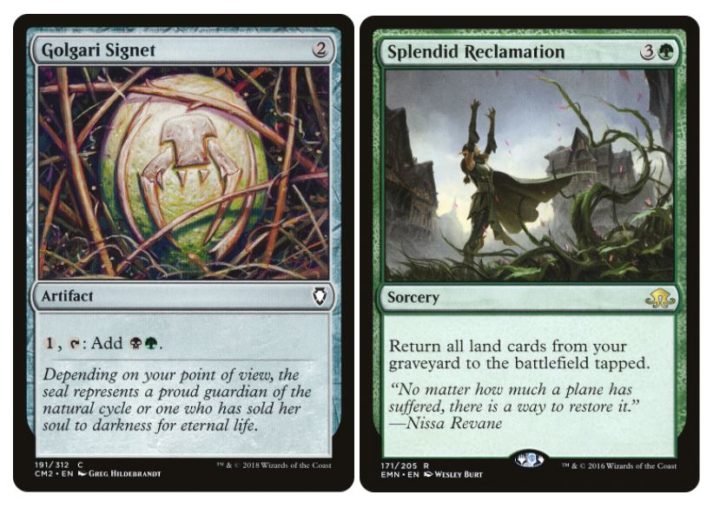
These differences cascade onward into our ramp selections. The small-life deck will do better with mana rocks — they can be cast and used easily as you draw them, and a surprising number integrate life triggers. The big-life decks can utilize land-based ramp to play a more secure, slower game; there are also some valuable interactions with mass land recursion, should you be on the self-mill plan.
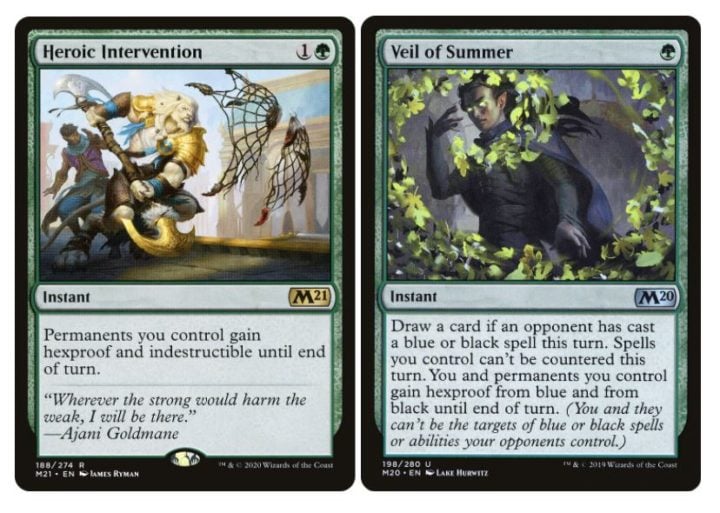
In terms of interaction, try and consider what your build is most vulnerable to. A proactive engine deck may want to steer for protective spells like Heroic Intervention if you think you can get your game plan set up at a competitive pace, while the most midrange big-life decks will need a wide variety of spot removal to stop faster decks winning. A deck that includes Blood Artist and a sacrifice theme most likely prefers Grave Pact or Butcher of Malakir for board control over clearing its own pieces with Wrath of God. Every slot of your 99 is a chance to further develop and leverage your chosen style!
ALTERNATE COMMANDERS
Of course, there’s no particular reason your stylistic choices need to be limited to the 99. Willowdusk looks just as powerful outside of the Command Zone (if not moreso, since her active can now contribute to commander damage), and Witherbloom Witchcraft throws up a few great alternative leaders to anchor your themes.
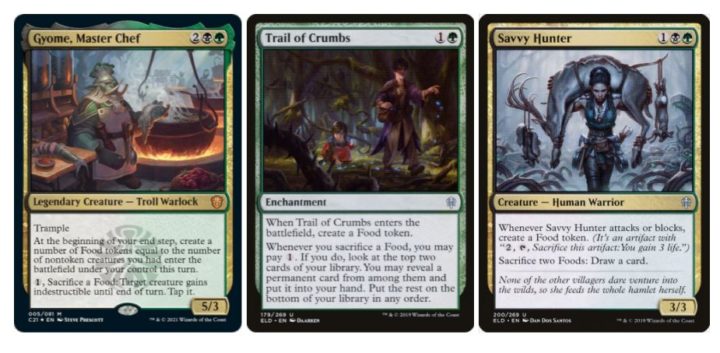
Gyome, Master Chef is by far the most flavorful option in the precon. His design does a great job of opening up a possible Food deck around Throne of Eldraine cards, while still being a perfectly serviceable and cool character that can blank some removal. And if you’re finding Willowdusk to be too powerful or straightforward for your metagame, here’s a commander that still lets you make plays, but without such large variance in what it can achieve turn-to-turn.
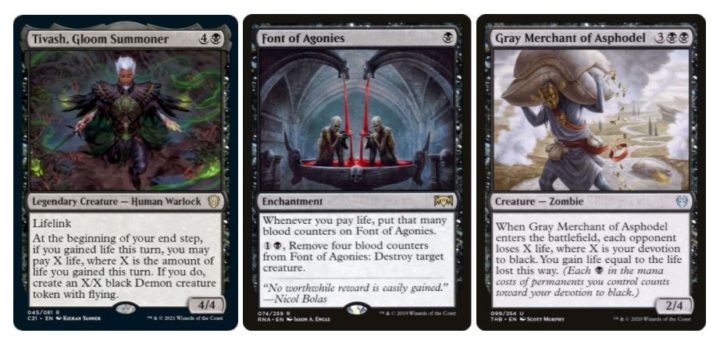
Tivash, Gloom Summoner is a trickier proposition when it comes to plug-and-play commander switching. Despite his strong synergy with this precon he’s not a true black-green card, and any deck led by him must conform to black-only color identity. Still, having your commander be both a sizable lifegain enabler AND his own best payoff is a really high-ceiling, high-floor kinda package. I’m interested to look into how well a Tivash-led build can reproduce the big-life strategy in monocolor!
$50 UPGRADE EXAMPLE
This precon is flush with the type of card which normally sets you back the most — unique, irreplaceable and powerful payoffs — so you can get a hell of a lot done for just $50 extra.
In fact, I held myself back a little in terms of how many slots to change. That means no Blood Artist/Aristocrats package for now, although almost all those cards are under $2, if you want to go deeper.
Instead, we sank a bit more of our budget into some evergreen pickups. Aetherflux Reservoir is an engine piece which scales in both size and frequency of lifegain triggers as the game goes on — and it saves us a slot by also providing a lethal threat. Shadowspear joins Loxodon Warhammer as the perfect complement to Willowdusk’s activated ability; make any creature gigantic, give it lifelink and trample, and then even if the attack isn’t lethal, you have tons of life to fuel another giant threat.
Vito, Thorn of the Dusk Rose is another way to spread lifelink through our team, and one which works regardless of whether we’re going wide or tall. Meanwhile, Mycoloth lets us do both at once when enhanced by Willowdusk’s activation. After you’re done converting lifegain into creatures and power, Woe Strider and Greater Good can turn those resources back into cards to renew the cycle. The rest of the new additions provide valuable triggers while lowering the deck’s average mana value.
The cards we cut aren’t even particularly bad for this deck, just a little expensive for what we can get from them. Honor Troll is pretty below power for Commander, though; since the bonus lifegain comes from a replacement effect, we do not generate extra triggers for our payoff cards. Druidic Satchel and Sapling of Colfenor are just too slow and too inconsistent for my tastes, while Nissa’s Renewal is a seven-mana spell designed to… put you ahead on mana? I generally want to be winning the game by that point, not ramping to slightly higher resources.
Still, if these are the most desperate replacements we need to make for a pack-fresh precon, I think that speaks for itself. Witherbloom Witchcraft and the other Strixhaven Commander decks represent a new standard of quality for these annual releases, and more importantly, for WotC’s ability to design for their most popular format.

Tom’s fate was sealed in 7th grade when his friend lent him a pile of commons to play Magic. He quickly picked up Boros and Orzhov decks in Ravnica block and has remained a staunch white magician ever since. A fan of all Constructed formats, he enjoys studying the history of the tournament meta. He specializes in midrange decks, especially Death & Taxes and Martyr Proc. One day, he swears he will win an MCQ with Evershrike. Ask him how at @AWanderingBard, or watch him stream Magic at twitch.tv/TheWanderingBard.

